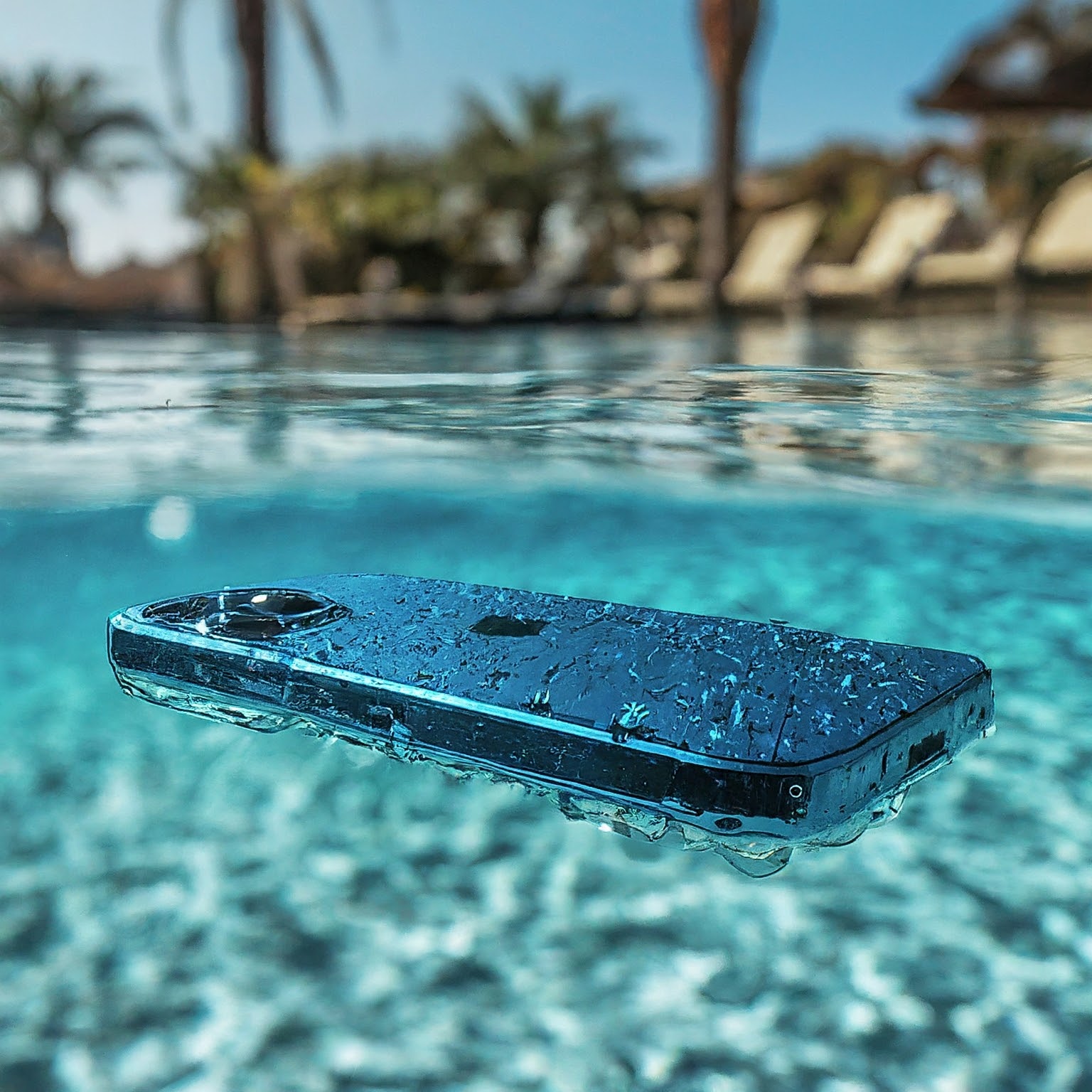In the world of smartphones, water resistance has become a highly desired feature. Many iPhone users and potential buyers often wonder, “Which iPhones are waterproof?” While no iPhone is 100% waterproof, several iPhones boast impressive water resistance capabilities. In this article, we’ll explore into which iPhones offer water resistance, what that means, and how you can protect your device from water damage. We’ll also answer some common questions about iPhone water resistance.
What is Water Resistance?
First, it’s essential to understand the difference between waterproof and water-resistant. Waterproof means that a device can be submerged in water for prolonged periods without any damage. On the other hand, water-resistant implies that a device can handle exposure to water up to a certain extent, such as brief submersion or splashes.
IP Ratings
Apple uses the Ingress Protection (IP) rating system to indicate an iPhone’s resistance to dust and water. This rating consists of two digits: the first signifies dust protection, and the second indicates water resistance. A higher number signifies better protection.
Here’s a breakdown of the IP ratings relevant to iPhones:
- IP67: This rating implies the iPhone can withstand accidental immersion in up to 1 meter of water for 30 minutes.
- IP68: This rating signifies a higher level of water resistance. iPhones with IP68 can survive submersion in water up to a certain depth (depending on the model) for 30 minutes.
Which iPhones are Water Resistant? A Model-by-Model Breakdown
Now that we understand IP ratings, let’s see which iPhones offer water resistance:
- IP67 iPhones (up to 1 meter depth for 30 minutes):
- iPhone SE (2nd generation and 3rd generation)
- iPhone XR
- iPhone X
- iPhone 8 and 8 Plus
- iPhone 7 and 7 Plus
- IP68 iPhones (varying depth limits for 30 minutes):
- iPhone 11 (up to 2 meters depth)
- iPhone XS and XS Max (up to 2 meters depth)
- iPhone 11 Pro and Pro Max (up to 4 meters depth)
- iPhone 12, 12 mini, 12 Pro, and 12 Pro Max (up to 6 meters depth)
- iPhone 13, 13 mini, 13 Pro, and 13 Pro Max (up to 6 meters depth)
- iPhone 14, 14 Plus, 14 Pro, and 14 Pro Max (up to 6 meters depth)
- iPhone 15, 15 Plus, 15 Pro, and 15 Pro Max (up to 6 meters depth)
iPhones with Water Resistance
Apple has steadily improved the water resistance of its iPhones over the years. Here’s a breakdown of which models offer water resistance:

iPhone 7 and 7 Plus
- IP67 rating.
- First iPhones having water and dust resistance.
iPhone 8 and 8 Plus
- IP67 rating.
- Similar water resistance to the iPhone 7 series.
iPhone X
- IP67 rating.
- Introduced the edge-to-edge OLED display while maintaining water resistance.
iPhone XS and XS Max
- IP68 rating.
- Can withstand submersion in water for up to 2 meters for 30 minutes.
iPhone XR
- IP67 rating.
- Offers robust water resistance at a lower price point.
iPhone 11 Series
- iPhone 11: IP68 rating, with water submersion of up to 2 meters for 30 minutes.
- iPhone 11 Pro and Pro Max: IP68 rating, up to 4 meters for 30 minutes.
iPhone SE (2nd and 3rd Generation)
- IP67 rating.
- Water resistance similar to the iPhone 8, up to 1 meter for 30 minutes.
iPhone 12 Series and Later
- iPhone 12, 12 Mini, 12 Pro, and 12 Pro Max: IP68 rating, up to 6 meters for 30 minutes.
iPhone 13 Series
- Maintains the IP68 rating with the same depth and duration as the iPhone 12 series.
iPhone 14 Series
- Continues the IP68 standard, offering excellent water resistance.
iPhone 15 Series
- iPhone 15, 15 Plus, 15 Pro, and 15 Pro Max: IP68 rating, up to 6 meters for 30 minutes.
- Maintains and slightly improves upon the water resistance seen in previous models.
Important Note: Water Resistance Isn’t Waterproofing
While impressive, water resistance has limitations:
- Depth and Duration: IP ratings specify maximum depth and time for submersion. Exceeding these limits can damage your iPhone.
- Type of Water: Fresh water is less harmful than saltwater or chlorinated pool water, which can corrode the iPhone over time.
- Accidental Exposure: Water resistance is meant for accidental splashes or brief submersion. Don’t intentionally submerge your iPhone, and avoid exposing it to pressurized water.
- Degraded Resistance: Seals and adhesives can wear down over time, reducing water resistance.
Common Questions About iPhone Water Resistance

What iPhone is 100% waterproof?
No iPhone is 100% waterproof. However, many models are water-resistant and can withstand brief submersion and splashes. The latest models, like the iPhone 14 series, offer some of the best water resistance available, with an IP68 rating.
Can I take my iPhone 14 in the shower?
While the iPhone 14 is water-resistant with an IP68 rating, it is not recommended to take it into the shower. The combination of water and steam can potentially damage the device over time. It’s best to avoid exposing your iPhone to high-humidity environments for extended periods.
Is iPhone 12 not waterproof?
The iPhone 12 is not waterproof but it is highly water-resistant. With an IP68 rating, it can withstand submersion in up to 6 meters of water for 30 minutes. This makes it one of the most water-resistant iPhones available.
Can iPhone 11 is waterproof?
The iPhone 11 is not waterproof but it is water-resistant. It has an IP68 rating, meaning it can be submerged in up to 2 meters of water for 30 minutes. This makes it suitable for accidental splashes and brief submersion but not for prolonged underwater use.
Protecting Your iPhone from Water Damage
Even though many iPhones are water-resistant, taking extra precautions is always wise:
- Use a Waterproof Case: For added protection, especially if you’re around water frequently.
- Avoid Intentional Submersion: Don’t purposely submerge your iPhone in water, even if it’s water-resistant.
- Dry Immediately: If your iPhone gets wet, dry it off with a soft cloth immediately.
- Avoid Charging: Do not charge your iPhone if it’s wet. Ensure it’s dry completely before plugging it in.
What to Do If Your iPhone Gets Wet
Accidents happen, and sometimes your iPhone may end up submerged in water. Here’s what you should do:
- Turn It Off: Power off your iPhone immediately.
- Dry the Exterior: Wipe down the exterior with a soft, absorbent cloth.
- Remove the SIM Card: If possible, remove the SIM card and tray to allow any trapped water to escape.
- Air Dry: Let your iPhone air dry for at least 24 hours before attempting to turn it back on.
- Avoid Heat: Do not use a hairdryer or other heat sources to dry your iPhone.
Conclusion
While no iPhone is entirely waterproof, many models offer excellent water resistance, providing peace of mind for everyday use. From the iPhone 7 to the latest iPhone 14, Apple has equipped its devices with robust water-resistant capabilities. Always take care of your device and use protective measures to extend its lifespan.

